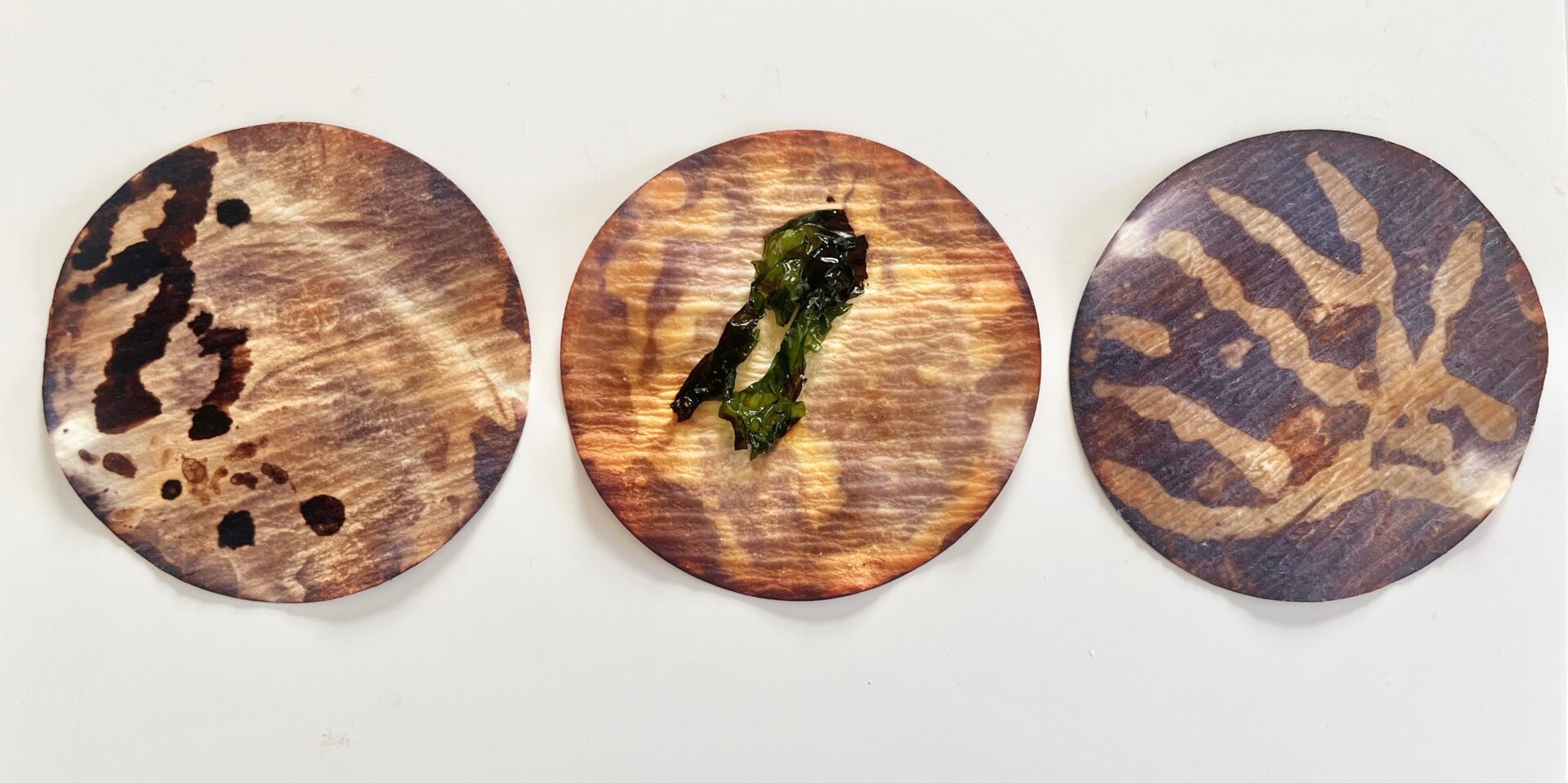Coastal Tonic

Simon Hall
Mixed-media
This project explored the historical relationship between healthcare and coastal waters. The work investigated local archival material and engaged with community groups, alongside considering the legacy of human impacts upon the environment and future of the river Thames estuary. The socially engaged project connected with creatives, environmental groups and academics, alongside delivering arts engagement activities considering the senses and the coast. The creative enquiry speculatively enquired regarding the rejuvenating properties of the local seaside through DIY shed-lab analytics of coastal air, water samples and found materials, including Victorian era methodologies to explore ozone, ionised baths and other remedies sold to relieve chronic health conditions.
The ‘Ozonometric Rejuvenation’ experiments included development of new methodology for creating artwork that responds to the environment using historical lab techniques. Ozonometric pieces change with exposure to the seaside air and qualitatively detect the concentration of ozone. Adapted from 1850’s laboratory methodologies created by Schonbein, the discoverer of ozone, these techniques can be embedded into pieces placed at the interface with the environment.
This Metal Culture residency included an outreach arts engagement workshop with the NetPark Wellbeing Project, an in-demand service for people living with mental health concerns, social isolation, dementia and trauma. In this project the participants explored senses, memory and emotion related to the coastal waters.
As part of the ‘Coastal Tonic’ residency, a new methodology for creating artwork that responds to the environment using historical lab techniques was created. Ozonometric pieces change with exposure to the seaside air and qualitatively detect the concentration of ozone. Adapted from 1850’s laboratory methodologies created by Schonbein, the discoverer of ozone, these techniques can be embedded into pieces placed at the interface with the environment.
A huge amount of time, resource and money was put into research of ground level ozone (03) and its lauded health wonders from the 1850’s onward until it was quietly sidelined in the early 20th C. It was finally realised that no health benefit could be found in its different forms. Nevertheless, it was a factor in the booming spa resorts in Victorian England. Besides the water, people flocked to breathe in the rejuvenating tonic of the ‘ozone rich’ coastal air they attributed the typical seaside smell to. It was widely sold as a cure for chronic health conditions.
The seaside smell previously attributed to ozone is in fact Dimethyl Sulfide, a substance made by bacteria and micro-organisms at the coastline with important roles in chemical processes in the ecosystem including cloud formation and climate regulation. To think about the interface of our bodies with the environment, the methodology for these pieces are adapted from an 1850’s laboratory technique by the scientist who discovered ozone, which qualitatively detects ozone in the air. With shed-lab materials, they experimentally embed Schonbein’s methods, and change when activated with distilled water from white to a range of colours depending on the concentration of ozone in the seaside air. They are placed to develop at the coast where, in Victorian times, people would sit by the banks overlooking the mudflats as the tide went out to breathe in the air for rejuvenation.
Simon Hall – Artist in Residence (2023) Metal Culture (Southend) https://metalculture.com
0 Comments